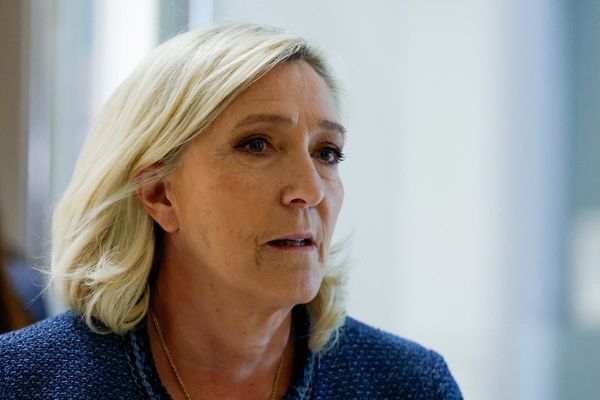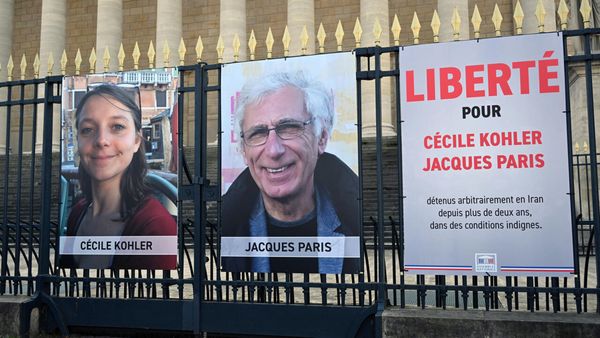
After Lucy Easthope lost her first baby to a miscarriage, she kept everything, from the pregnancy test and her first scan to the hospital appointment slips, in a brightly coloured shoebox. As a disaster expert whose responsibilities include making the loss of loved ones as bearable as possible for those left behind, she had plenty of experience working on memory boxes, right down to the package design (“too ‘gifty’ and it looked all wrong”). These boxes might contain anything from a charred passport or a wedding band to the wrapper from a packet of mints. Easthope understood the importance of preserving these items for grieving relatives, and now she was doing it for herself. Her shoebox of memories of her baby was, for her, “proof that she had been. That she had existed.”
Easthope is one of the UK’s leading authorities on emergency planning. She is the person who assesses the scale of a disaster and what is needed to ensure smooth operations in the aftermath. Over the course of her career, she has advised on chemical spillages, volcanoes, fires, floods and terrorist attacks. She lent her expertise to operations around the 2004 tsunami, the 7/7 bombings, the Grenfell fire and, most recently, the British response to Covid-19: “We are all disaster survivors now,” she writes. Her work has an even more immediate resonance in the light of the invasion of Ukraine, with images of shattered apartment buildings and lines of refugees suddenly ubiquitous. As well as dealing with immediate practicalities, high up on her agenda are the needs of those left behind: the displaced, the traumatised, the bereaved.
When the Dust Settles is Easthope’s candid, unsettling and at times darkly funny account of a life spent planning for and dealing with the aftershocks of catastrophe. Highly specialised and not for the faint-hearted, hers is a role that tends not to be lauded in the way that the work of paramedics or firefighters is, since much of it takes place behind closed doors. “We are a Cinderella service,” she notes, “sweeping up below stairs.”
Among Easthope’s early jobs was preparing for returning bodies from Iraq after the invasion by coalition forces in 2003. A year ahead of time, she was given the task of building a mortuary that could house thousands of corpses, some of which might be contaminated with the chemical weapons it was alleged the Iraqi leader Saddam Hussein had been stockpiling. And so, while the Stop the War marches made their way through the streets of London, Easthope was tracking down flags, coffins and body bags.
In 2005, when suicide bombers activated explosives in three locations on the London underground and another on a London bus, Easthope – who was on the tube herself at the time – sprang into action. Among her more unlikely instructions was to find a hawk to scare off scavenging pigeons. This trick was learned from the operations at New York’s Ground Zero where it was discovered that, in the weeks following 9/11, pigeons were picking up small human bones from the site and building them into their nests.
Easthope is excellent on these small yet significant details, which provide an insider’s perspective on situations that most of us will only ever experience via news reports. The disasters recalled here often read like short stories, each of them filled with high drama, surreal twists and, in some cases, mysteries to be solved. But there is much about the author that remains beyond our reach; analysis of disaster zones may be second nature to Easthope, but analysis of the self is more of a challenge. She attributes her choice of career to the Hillsborough disaster – a native of Liverpool, she was a child when it happened and saw how the resulting trauma and anger reverberated through communities for years to come. But this doesn’t fully explain her motivations, or the makeup of an individual who sees the “beauty of [human] decomposition and the way that we break down into our constituent chemicals and minerals”. Elsewhere, it is with a clear sense of distance that she reflects on the careful collection and storage of body parts, or how the smell of death “has put me off mushrooms for life”, or the fact that she feels “at home in a disaster mortuary”. What might seem shocking and gruesome to the reader is merely part of a day’s work for her.
Nonetheless, Easthope emerges as a likable, quietly stoical and ultimately heroic character who has endured her own hardships and whose instinctive empathy and compassion make a tangible difference to the lives of people at their most vulnerable. She invokes the Welsh word hiraeth, which she first heard when researching the Aberfan tragedy in Wales that killed 144 after a colliery spoil tip collapsed in 1966, and for which there is no direct English translation. It means longing for a place or a state of being to which there is no return. While Easthope has seen for herself that there is life after tragedy, she also understands that “disaster is perpetual, chronic, with a pain that ebbs and flows like tides”.
• When the Dust Settles: Stories of Love, Loss and Hope from an Expert in Disaster is published by Hodder & Stoughton (£20). To support the Guardian and Observer order your copy at guardianbookshop.com. Delivery charges may apply.







